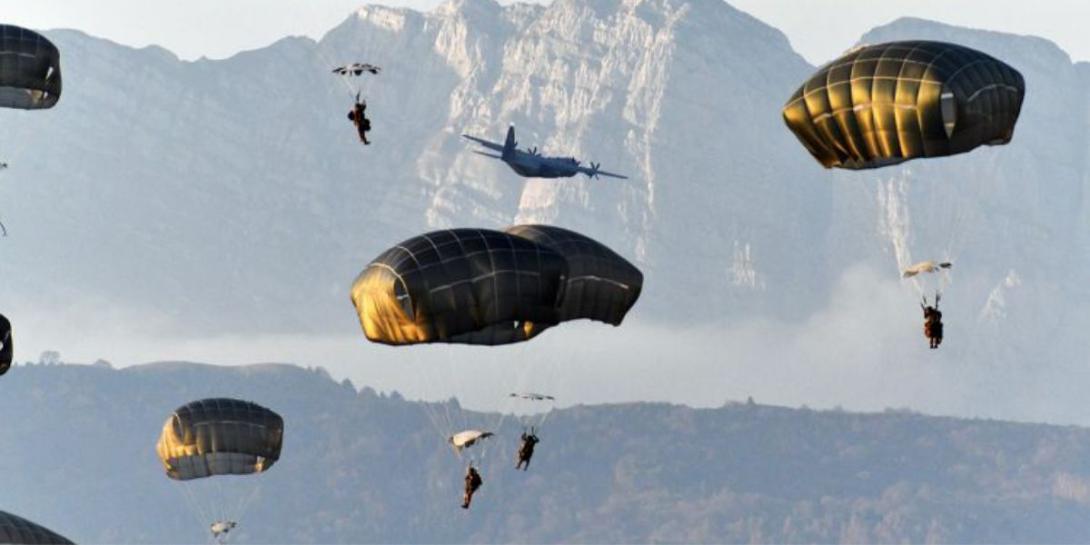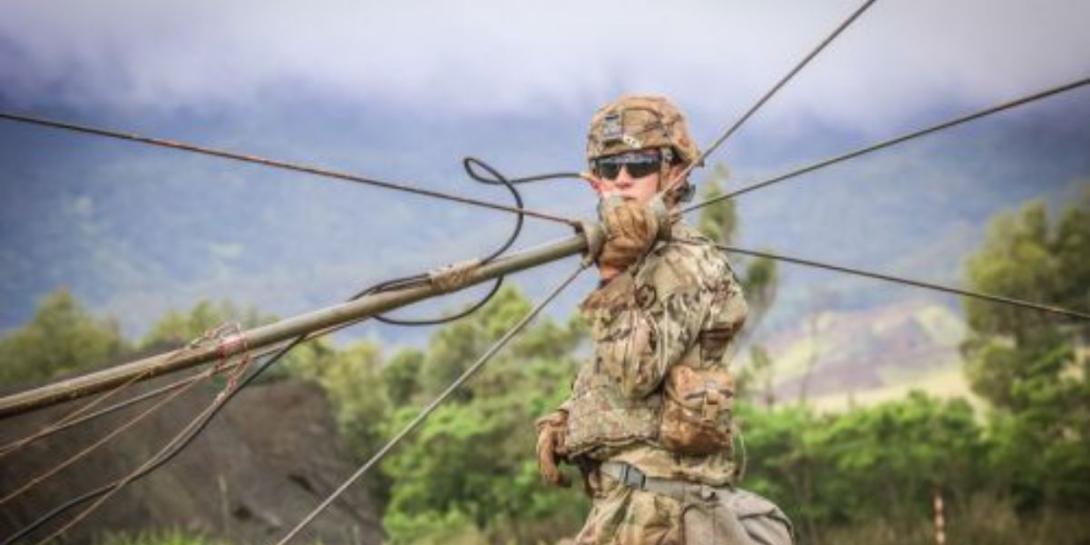Army Simplifies and Unifies the Tactical Network
As part of the Army’s efforts to eventually unify its tactical and enterprise networks, the service is developing three pilot technologies designed to simplify the planning and management of its tactical network.
The unified network is expected to provide a seamless integrated network management capability to simplify user experience, increase situational awareness and strengthen cyber network defense, according to Army officials. Under a unified network, communication offices from the tactical edge through corps level will have fewer network management and monitoring applications and tools to enhance their ability to plan, configure, manage, monitor and secure the network. Lt. Gen. John Morrison Jr., USA, the service’s deputy chief of staff, G-6, has described the separation of enterprise and tactical networks as a false divide.
Modernization efforts include fielding enhanced equipment to signal battalions, cutting-edge command posts and commercial satellite communications capabilities. However, as the Army provides one advanced capability after another, it also injects more sophisticated and complex systems, creating challenges for signal officers and soldiers.
Paul Mehney, a spokesman for the Program Executive Office-Command, Control and Communications-Tactical (PEO-C3T), says the office is providing “leaps ahead in connectivity, leaps ahead in the ability to maneuver, leaps ahead in the ability to know where their soldiers are located and push that data, location data and operational mission command data across echelons up and down.
“We’re obviously providing additional commercial network capability in the units at a fairly rapid pace. That comes with challenges for how you manage all of this additional capability,” Mehney explains. “What that creates is a larger burden and a greater degree of difficulty to manage those networks and then to be able to operate all of the various network management tools that come with that.”
He adds that it is critical for the service to begin removing some of that complexity. The PEO-C3T plans an array of technologies to achieve that goal. Three of those either are being fielded now or will be soon.
They are the Network Operations Management System (NOMS), which is used to manage the network and support non-classified, classified and coalition network enclaves with a common look and functionality; Atom, described as a single planning and loading tool that supports multiple tactical radios; and the Ruggedized Application Platform-Tactical Radio (RAP-TR), which consolidates lower tactical network tools onto a single Dell laptop or tablet to streamline tactical network management.
The systems are included in a suite of tools that reduces the time it takes to initialize, plan and load a brigade’s worth of radios from four weeks to less than two hours. The Army is rapidly developing and fielding the technologies under the Unified Network Operations mid-tier acquisition effort.
Maj. Nick Perkinson, USA, the PEO-C3T assistant product manager for Network Operations, describes the technology trio as “foundational prototype efforts” that will eventually come together under a Unified Network Operations program of record. “We’re putting it together in pieces right now. Once all of this comes together, we will have the ability to plan, monitor and manage both the upper and lower tactical Internet with a consolidated user interface as well as an open architecture API [application programming interface] to allow all of it to communicate together, as well as create an industry standard tool for any applications that are going to reside on it or communicate with it.”
Atom, in a nutshell, is a capability for planning the radio network or the lower tactical Internet planning capability. NOMS is the monitoring and management capability for the upper tactical Internet, which primarily includes satellite communications. RAP-TR houses Atom and a myriad of other planning, monitoring and management tools.
As a part of the NOMS effort, the Army is consolidating 24 different software programs into one common tool that soldiers will use to monitor and manage approximately 15 systems already in the field. It will be the centralized monitoring and management tool within a network operation and support center, allowing a view of the network and the ability to push out software updates or patches.
The PacStar technology will benefit both on-the-move and at-the-halt communications. “It enables you to see an entire picture of your network, your data latency, your bandwidth and basically just a communications common operating picture with the ability to troubleshoot and fix it as needed. The at-the-halt version is going to be fielded later this year, and the on-the-move version is currently in production,” Maj. Perkinson reports.
Atom, which is built by L3 Harris, consolidates eight network operations tools. It also reduces by 75 percent the number of steps for the signal soldier to plan a radio network. Together, Atom and RAP-TR reduce training time from 220 hours for previous network planning tools to 80 hours. The training time is expected to drop to about 60 hours next year due to improvements based on soldier feedback.
Atom supports multiple tactical radios, including the AN/PRC 148, 158, 162 and 163, as well as legacy waveforms such as the Mobile User Objective System, Single Channel Ground to Air Radio System, and Integrated Waveform/Demand Assigned Multiple Access. The pilot effort will continue through the 2021 fiscal year and is expected to obtain fielding approval by the next fiscal year.
Army officials were expected to release an updated version in July capable of loading more radios. They also intend to add map editing capabilities. Atom provides a network plan, but it can be cumbersome for soldiers to add or subtract radios, according to Maj. Perkinson. “Through a lot of the soldier touchpoints and group discussions, we’ve identified that they want to be able to edit to make even these small changes easier. We’re going to try to cut down on the time it would take to make all these changes to meet each and every unit’s specific need.”
The RAP-TR system is currently housed on both laptops and tablets, but the Army is moving toward a tablets-only solution, in part because younger soldiers prefer tablets and because airborne units need systems that weigh less than two pounds. “Currently, we have nine applications that are on the RAP-TR laptop and tablet as it stands today. We’re going to move from the laptop to the tablet in the future, which will be lighter, have a stronger battery and be able to house more applications,” says Kevin Blohm, RAP-TR assistant product lead.
Additionally, the Army is talking with officials from the other services to provide multi-service tools on RAP-TR. The system is being fielded as part of the Army’s Capability Set 21. Currently, it is being delivered to the 173rd Airborne Brigade, which is based in Italy and Germany, and to the 3rd Brigade, 25th Infantry Division in Hawaii. The 3rd Brigade, 82nd Airborne Division, is next in line.
The official Unified Network Operations program of record is scheduled to begin in fiscal year 2024, and the initial technology package will be fielded as part of Capability Set 25. While the service already has significantly reduced the number of network tools soldiers must contend with, the program of record will continue to “collapse” the number of tools even further, says Brent Smith, deputy product manager, Tactical and Cyber Network Operations, within the PEO-C3T office.
Many of the technologies developed for the tactical network will ultimately be adapted for the enterprise applications as well. “The current construct moving into the Unified Network Operations program of record is to develop or focus tools at the tactical level and then scale those to encompass the requirements of the enterprise network,” Smith explains.
Maj. Perkinson indicates that simplifying the network is no simple task. “Managing the ever-growing network complexity is always a challenge. There are lots of different tools out there and just trying to give the soldier the best capability to manage or execute all of those different tools, trying to keep up with technology to provide the best function to the warfighter, that’s always a challenge,” he says. “It’s not getting any easier. We’re just trying to make it easier.”






Comment
IT professional working for
IT professional working for GDIT Inc. on a DoD CIO contract supporting tactical data link communications such as Link 16, Link 22, etc.
Comments